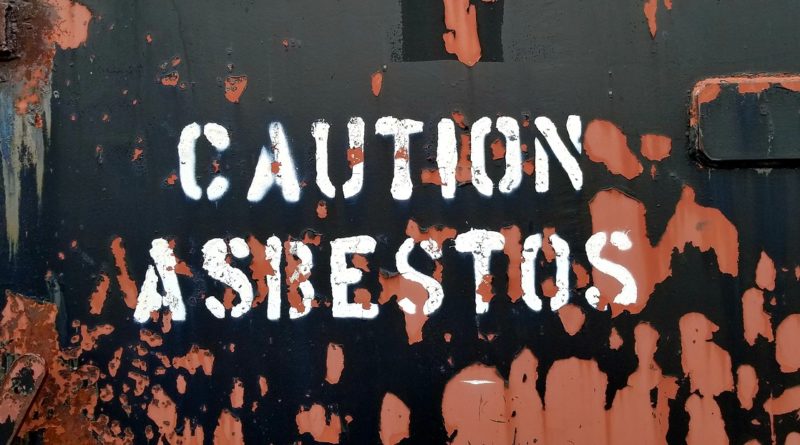7 Harmful Effects of Asbestos and How to Avoid Poisoning
Asbestos refers to a set of six naturally occurring silicate minerals consisting of fibres. These minerals can be found in their natural state in rock formations in selected parts around the globe.
The fibres of asbestos are strong, flexible, and can resist high temperatures, the reason why it can be used to insulate noise or reduce heat. These characteristics are the reason why asbestos was once popularly used in renovation and construction. In fact, most houses and other buildings constructed between 1940 and 1980 involved the use of asbestos.
The Damaging Effects of Asbestos
Today, asbestos is regarded as a public health menace and should be avoided. However, people who have contact with asbestos before do not always end up having health problems. The risk of developing an asbestos-related disease depends on several factors, including:
- If the person exposed to asbestos is a smoker
- If the person already has breathing conditions or existing lung disease
- The time passed since first exposed in asbestos
- The frequency and how long the exposure occurred
- The amount of asbestos present in the air
Diseases Caused by Breathing Asbestos
When a person breathes in asbestos, fibres may get stuck in the lungs and irritate lung tissues. There have been many studies proving that various diseases can be developed over the years if a person is exposed to asbestos.
1. Mesothelioma
Mesothelioma is a type of cancer that affects the membrane that covers the membrane lining of the abdominal cavity, the chest and lung cavity, or membranes surrounding other internal organs. The symptoms of this disease do not appear immediately. It is usually detected and becomes apparent 30 to 40 years later after the exposure to asbestos.
2. Lung cancer
Cancer of the lungs happens when a malignant tumour blocks and invades the air passages of the lungs. If the person exposed to asbestos is a tobacco smoker, he is automatically more at risk of developing lung cancer.
3. Asbestosis
This is a disease specific to inhaling the fibres of asbestos and is marked by scarring in the lungs. Oxygen and carbon dioxide cannot pass efficiently in and out scarred lungs, so there is difficulty in breathing if one has asbestosis. Asbestosis happens in the body if a person has been exposed to high amounts of the mineral for an extended period, but like mesothelioma, it doesn’t start to manifest until years later.
4. Pleural disease
This is another type of lung disease that can change the state of the membrane that surrounds the chest and lung cavity. There may be a build-up of fluid around the lungs, or the membrane may become thicker throughout or in specific areas. People with a pleural disease may not always have breathing problems, but their lungs will start to function less efficiently.
5. Ovarian cancer
With mesothelioma and other lung diseases, it’s clear how asbestos reaches the lungs, and this is through ingesting or inhaling fibres. However, it is still not clear as to how asbestos reaches the ovaries and further studies are being performed on the matter.
Some researchers believe that the fibres of asbestos are transported to the ovaries via the reproductive tract. Others believe that the fibres may have travelled in the body’s lymphatic system or bloodstream, which then infiltrates the ovaries through the mesothelium lining.
6. Stomach cancer
In a report published in 1985, wherein researchers assessed more than 40 studies of mortality data among workers exposed to asbestos, stomach cancers were common among them. The results of the studies showed that there is a likelihood of developing stomach, esophageal, and gastrointestinal tract cancers in workers who previously worked with asbestos.
7. Laryngeal cancer
In the past, the connection between laryngeal cancer and asbestos were somewhat contradictory. In 2006, however, a report by the National Institutes of Health confirmed that asbestos can cause cancer of the larynx. The risk can even become greater if the person has been exposed to asbestos for a longer period.
Exposure to Asbestos and How to Avoid Poisoning
The fibres of asbestos usually get into the air when something disrupts the state of rocks, soil, or older products, such as:
- Disturbing soil contaminated by natural asbestos deposits
- Crushing, cutting, or handling old products containing asbestos during demolition or renovation
- Crushing rock with natural deposits of asbestos
- Erosion or weathering of natural asbestos deposits of old products and materials or in the ground
- Cleaning products or places that may stir up dust that contains asbestos
- Gardening in soil contaminated by asbestos
- Handling or using consumer products that have come in contact with asbestos
When asbestos gets into the air, the amount that people can breathe depends on several factors as well, including:
- The intensity of the disturbance
- Moisture and weather conditions
- The characteristics and age of the material
- The type of material the asbestos can be found
- The location
Once the fibres of asbestos get into the air, they will act similarly regardless of the source. For example, a fibre of chrysotile (white asbestos) will cause the same risk of disease regardless if it came from a commercial product or from a natural deposit.
Reducing Asbestos Exposure
Individuals who work around asbestos or materials that have asbestos content should:
- Wear the proper protective gear
- Receive training for the proper handling of asbestos
For those who live in older homes, it is advised not to disturb the materials that may contain asbestos, including:
- Vermiculite attic insulation
- Furnace and pipe insulation, popcorn ceilings, flooring, and siding built from the 1940s to 1980s.
Always hire contractors if you want to dispose of or remove asbestos to avoid contamination. You should also talk to your state or local environmental agency if your properties contain any trace of asbestos.
If you live close to an area with natural deposits of asbestos or near a house or any structure that contains asbestos, always keep your windows closed especially on windy days. It would also help if you remove your shoes before entering the house or use doormats. It is also advised to use wet cleaning methods and HEPA vacuums.
Keep in mind that people may be exposed to asbestos if the fibres accidentally get on the skin or if some fibres are swallowed. However, these types of contact will only cause health problems if there is a high level of exposure. Breathing asbestos is also more dangerous than merely touching it or swallowing it.
If you want your home tested and monitored for the presence of asbestos, you can contact Threshold Environmental Asbestos Brisbane.




